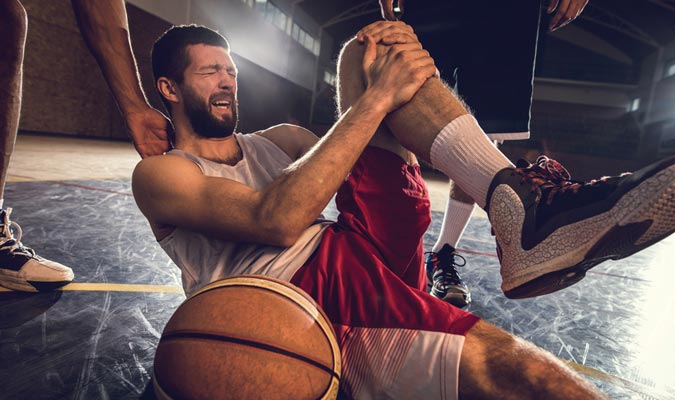One of the hallmarks of preventative medicine is patient education. Luckily, it won’t take hours of your time or require you to take an anatomy or biology class, but learning a little more about your body and its function can help prevent injury. The knee is one of the most interesting and intricate structures in the body. In actuality, the knee is the body’s largest joint, and as such, it is very vulnerable to injury. Read on to learn more about your knee, how it works, and how you can help prevent injuries.
What Does the Knee Do?
While the knee itself is the largest joint in the body, it functions as much more than a joint, as it connects several bones together. Slightly reminiscent of a song often heard in grade school, the knee connects the thigh bone, shin bone, kneecap, and fibula. The knee is also classified as a synovial joint, which means that the kneecap is filled with fluid. If the knee is hit directly by force or with an object, it requires immediate medical attention because of the complexity of its structure.
The knee also consists of tendons, meniscus (cartilage), and ligaments. A majority of the knee’s functions are supportive in nature. It supports you while in a sitting position, provides you with stability, and acts as a shock absorber. In addition, your knee allows you to raise or lower your body and gives you propulsion and efficiency while walking.
The cartilage in the knee (meniscus and articular cartilage) acts as a shock absorber, allowing bones to move freely. This is what gives the knee its flex and wide range of motion; otherwise, bones would rub together, causing extreme irritation. Tendons provide joint stability, while ligaments help connect bones together. Muscles are not technically part of the knee and its joints, but they help strengthen the leg and allow the knee to flex.
High Risk of Injury
Because of the intricate connections and structure of the knee, proclivity toward injury is high, especially if you participate in sports or athletics. If you’re a football fan, you may often hear about a “torn ACL” or “torn MCL.” These are both knee ligaments, and these injuries are somewhat serious. An ACL or MCL can also be sprained or strained. These injuries occur not only in football but also commonly in soccer and basketball. A meniscus tear is another common injury that occurs when the knee is twisted. Fracture is also a concern. In addition to being a sports injury, fracture can also occur with blunt force trauma (such as an automobile accident), or from a fall. Overuse of the knee can also cause serious pain. Referred to as “runner’s knee,” overuse of the kneecap occurs after heavy periods of running and cycling, with the first-line treatment being rest.
How to Prevent Injury
Knowing a little about the knee can help you prevent serious injury, even if you play contact sports. Always remember to warm up before partaking in any type of physical activity–even running or brisk walking. Gently stretching allows your knee and its connections to adapt to physical activity slowly. Cool-down is also a must, especially after strenuous activity. If you do play sports, always wear knee guards, even during practice.
When you’re not engaging in heavy activity, make sure to use your knee often. Climb stairs instead of using the elevator, use weights when you work out, or hop on the stationary bicycle at the gym to help promote knee strength.
Remember to replace worn-out shoes immediately as they show signs of wear. Shoes that fit improperly or are too worn can contribute to knee injury and damage. Keep your weight within a healthy range to avoid putting undue pressure on your knee. Perhaps most importantly of all, always wear a seatbelt in a moving vehicle.
For more information on knee anatomy, or for more helpful tips and tricks on how to prevent knee injury, contact Capital Ortho today for an appointment. If you’re already in pain and require treatment, we can get you on the road to recovery.

